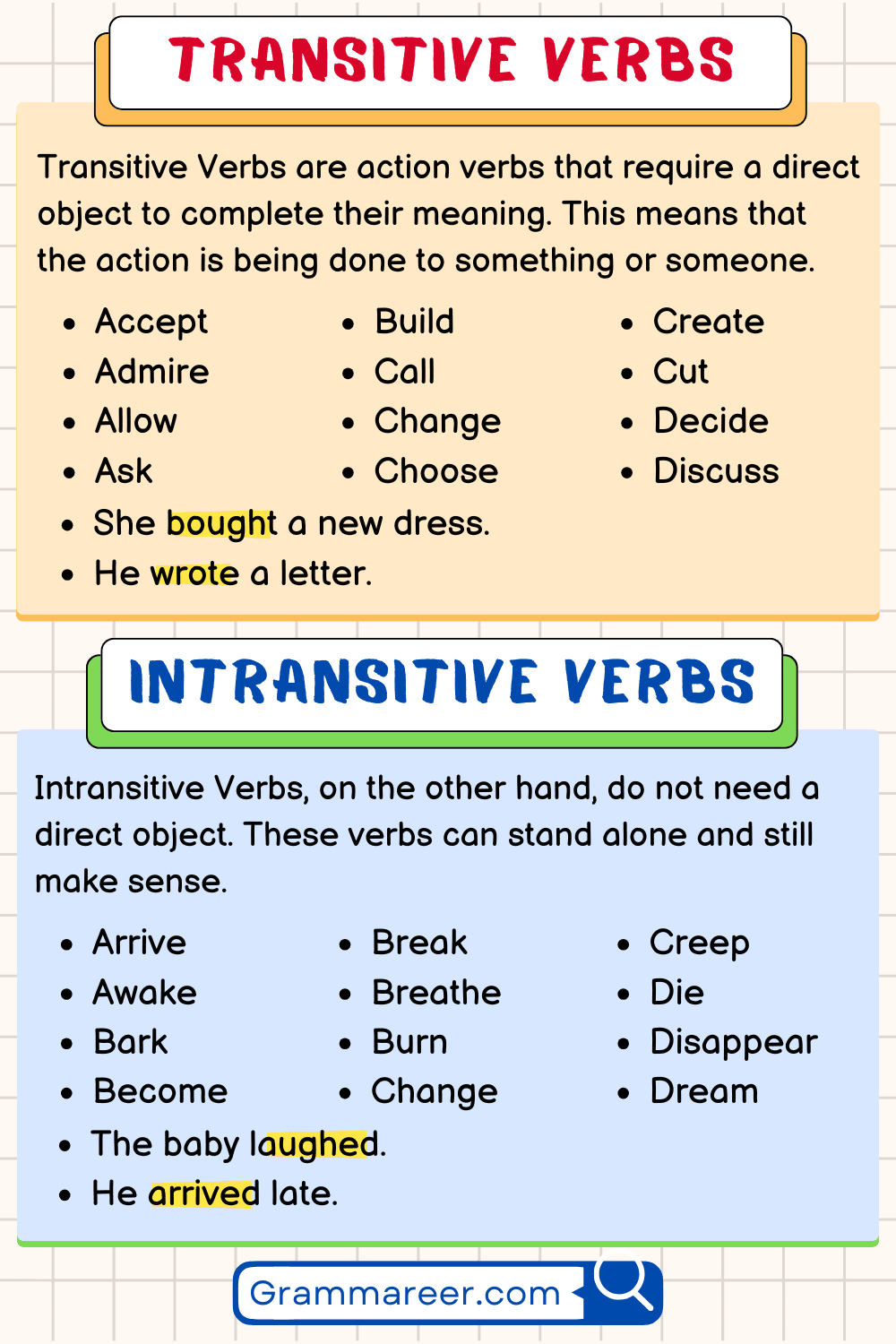Verbs play a crucial role in the English language, as they convey actions or states of being within a sentence. Understanding the difference between transitive and intransitive verbs is essential for constructing grammatically correct sentences.
Transitive and intransitive verbs are distinguished by the presence or absence of a direct object in a sentence. Knowing how to identify these types of verbs can help improve your writing and communication skills.
Identify Transitive and Intransitive Verbs
Transitive verbs are verbs that require a direct object to complete their meaning. In a sentence with a transitive verb, the action of the verb is done to someone or something. For example, in the sentence “She ate the apple,” the verb “ate” is transitive because it acts upon the direct object “apple.”
On the other hand, intransitive verbs do not require a direct object to complete their meaning. These verbs express an action or state of being that does not transfer to an object. For instance, in the sentence “He sleeps peacefully,” the verb “sleeps” is intransitive as it does not require a direct object to make sense.
Identifying transitive and intransitive verbs can sometimes be tricky, as some verbs can function as both depending on the context. It is important to analyze the structure of the sentence to determine whether a verb is transitive or intransitive.
One way to identify transitive verbs is to ask the question “what” or “whom” after the verb. If the answer completes the meaning of the verb, then it is likely transitive. For example, in the sentence “They built a house,” asking “what did they build?” helps identify “house” as the direct object of the transitive verb “built.”
Conversely, intransitive verbs do not have a direct object that receives the action of the verb. They often express an action that is complete within itself. For instance, in the sentence “The sun rises in the east,” the verb “rises” is intransitive as it does not require a direct object to make sense.
Understanding the distinction between transitive and intransitive verbs can enhance your writing skills and help you construct clear and concise sentences. By identifying the type of verb used in a sentence, you can ensure that your message is conveyed accurately to your audience.
